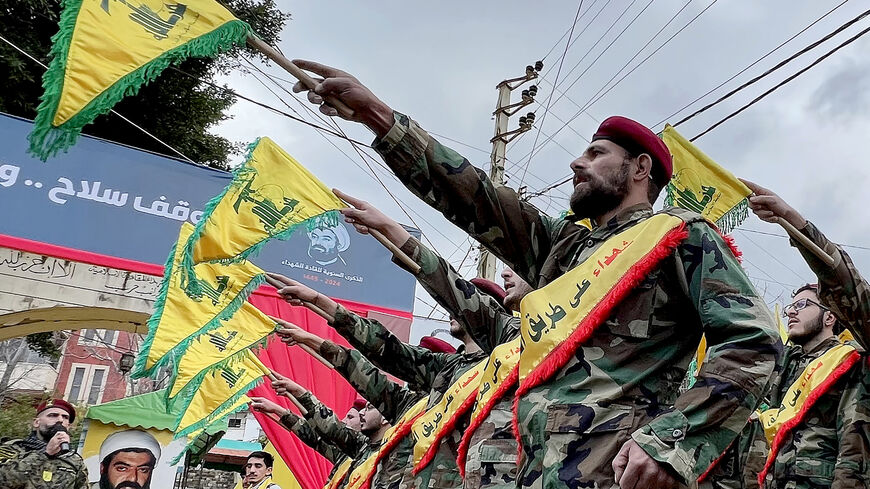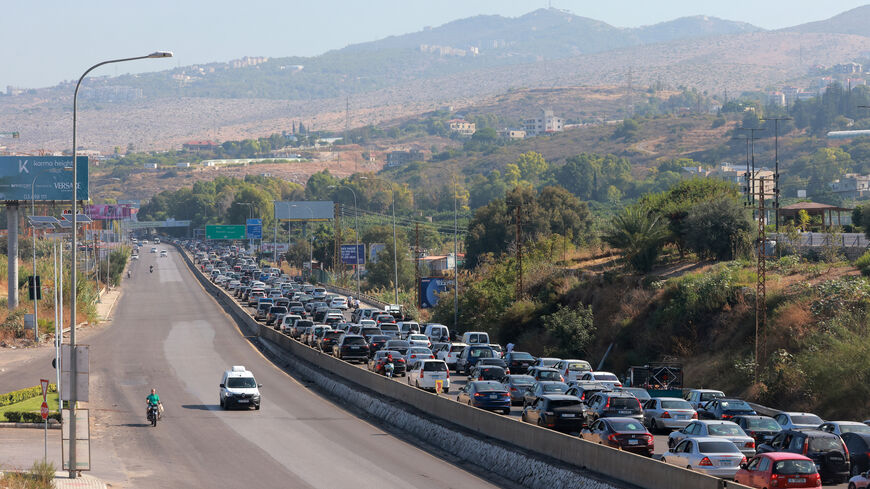Lebanon sees biggest wave of displacement since 2006, over 20,000 take shelter in schools
Lebanon is witnessing its largest wave of displacement since the 2006 war amid extensive Israeli airstrikes against Hezbollah targets in the country.

BEIRUT — Schools and universities in Lebanon will remain closed through Friday as tens of thousands of displaced residents take shelter in schools across the country. The evacuees have fled fighting in the south amid the Israel-Hezbollah escalation, which gained steam in recent days.
Check out Al-Monitor's live blog here.
Lebanese caretaker Education Minister Abbas al-Halabi extended the closure of all schools and universities in the country in light of the security situation. In another circular issued on Tuesday, Halabi ordered all public schools to receive displaced Lebanese residents and coordinate with relevant institutions to provide assistance for them.
Over 20,000 people are estimated to have already sheltered in buildings and centers designated by authorities as public shelters since Israel widened its air campaign against Hezbollah targets in Lebanon on Monday, according to caretaker Interior Minister Bassam Mawlawi.
In an interview with the Saudi-based Asharq News on Tuesday, Mawlawi added that more people continue to flee the fighting in the south of Lebanon.
The Lebanese Civil Defense said in a Tuesday statement that its teams are working to provide water to the displaced in shelters throughout Lebanese territory.
Since Monday, roads linking the south to the north have been jammed by thousands of cars heading toward Beirut, in the biggest wave of displacement in the country since the last war between Israel and Hezbollah erupted in July 2006.
Photos and videos circulating on social media showed people sheltering in churches and others handing out food to those fleeing the lines of fire. Al-Arabiya report documented lines of cars fleeing Lebanon into war-torn Syria.
#طرابلس #لبنان
من أجمل ما رأيت
يثبت أهل طرابلس لإخوانهم في الجنوب بأننا لا نكرهكم لا نحمل لكم العداء
لم يسألوا النازحين من أهل #جنوب_لبنان عن اسمهم ولا أعمالهم ولا إنتمائهم بل أستقبلوهم بالماء والطعام
فعدونا واحد .. pic.twitter.com/UFZ1XTkfyQ— جاسم العذاب (@alathab_jassem) September 24, 2024
On Monday, the Israeli military warned civilians living in or near areas where Hezbollah may be storing weapons to immediately leave their locations as it stepped up its strikes on Hezbollah targets in the south and east of the country. It repeated this call again on Tuesday.
By Tuesday, the Israeli army said it had dropped some 2,000 weapons on about 1,500 Hezbollah targets in Lebanon. Meanwhile, Hezbollah fired more than 220 rockets toward Israel so far Tuesday, the largest daily number since fighting began one year ago.
Over 558 people have been killed in the extensive Israeli airstrikes in Lebanon since Monday and 1,835 others have been injured, according to the Lebanese Health Ministry.
Some 50 children are among the casualties, which also include members of the Civil Defense and paramedics and two workers of the UN refugee agency. The UNHCR said in a statement on Tuesday it was “outraged and deeply saddened” by the killing of two of its employees, stressing that the “protection of civilians is a must.”






